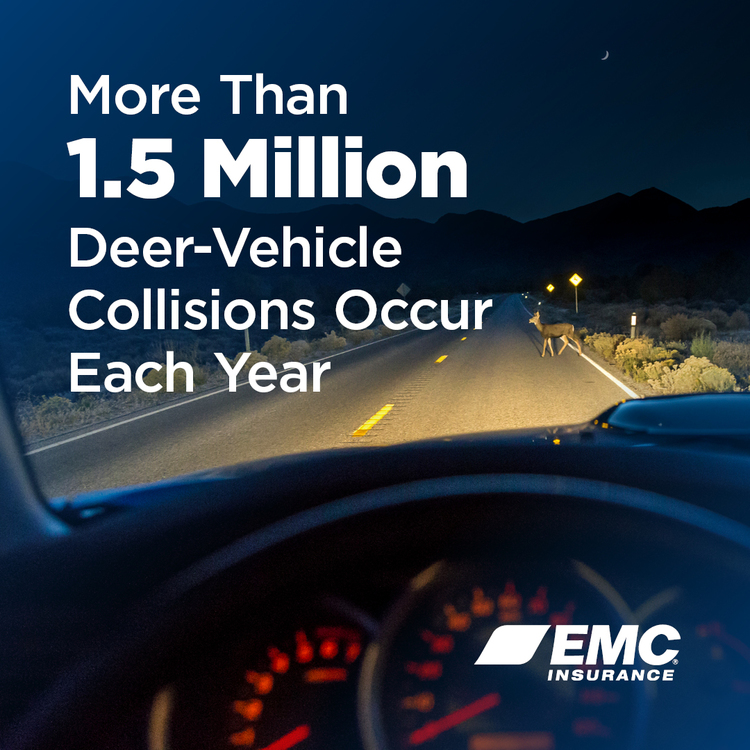Many daytime driving dangers are still present—and often more dangerous—after dark. Here are 4 surprising nighttime hazards to watch out for:

Driving at night can be challenging, and many drivers don’t realize they must adjust their daytime driving styles. Read on for some common roadway risks and how to mitigate them.
1. Nocturnal animals, especially deer
The Insurance Institute for Highway Safety estimates that there are more than 1.5 million deer-vehicle collisions each year.
What you can do:
- Watch for animal eyes shining along the road
- Remain alert in areas where deer are likely, especially if you see road signs that indicate animals are in the area
- Be cautious when deer are on the move (between late October and early December in most areas, and generally early in the morning and early evening)
- Schedule out-of-town meetings to avoid prime deer movement times, especially if you’ll be driving through a rural or wooded area to get to your destination
2. Your vehicle’s features
Darkness can amplify problems with your vehicle’s lights, windows and mirrors.
What you can do:
- If you drive a vehicle without automatic lights, get in the habit of driving with your lights on
- Check headlights’ aim, alignment and cleanliness to make sure you can see the road and other drivers can see you
- Keep lights inside the vehicle off to avoid distracting the driver
- Keep a microfiber cloth or old newspapers to clean the inside of your windows
- Clean and adjust exterior mirrors before you begin driving and again after each stop or driver change
- Adjust the inside rear-view mirror for nighttime driving by flipping the tab at the bottom
3. Daylight saving time
Many experts suggest that when we “fall back” in October or November, drivers are at greater risk for accidents as it darkens. However, research conducted at the University of Colorado showed that the springtime shift is even more deadly, with the first six days of daylight saving time resulting in hundreds of deaths.
What you can do:
- Drive with extreme caution during the first few days of daylight saving time, both in the spring and in the fall, postponing any long-haul trips if possible
- Ensure you are getting enough sleep
4. Body rhythms
Even night owls are sleepier and less alert after dark. Highway hypnosis caused by the darkness and the lights from oncoming cars can lead to accidents at night.
What you can do:
- Pull off the road if you catch yourself dozing off
- Keep the vehicle on the cool side
- Listen to music, and turn it up a bit louder than normal
- Take frequent breaks, as moving around can help perk you up
- Keep your eyes intent and your brain alert by watching your surroundings as closely as possible
Remember that the driving dangers you face during the daytime are still present and often more dangerous after dark. These include:
- Driving too fast for conditions
- Tailgating
- Distracted driving
- Wet or icy conditions, especially black ice, which is difficult to see even in the daytime http://ow.ly/axbZ30r41lZ
